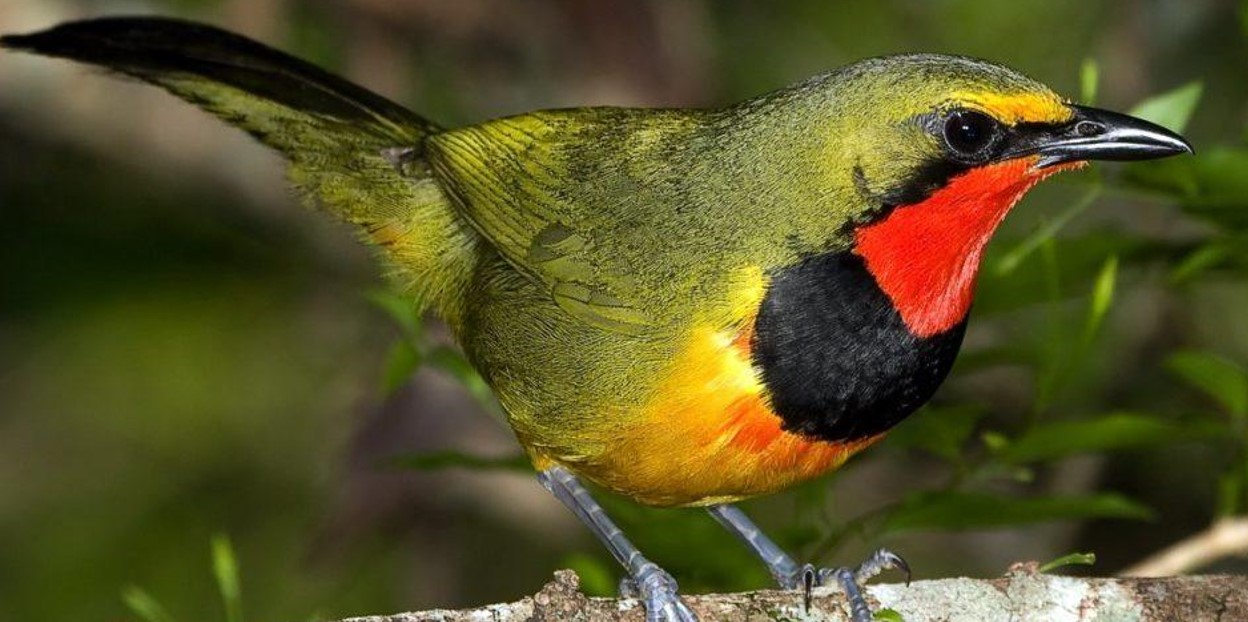
15-day Ultimate Uganda Birding Safari
This 15-day Ultimate Uganda Birding Safari boasts several fantastic birding destinations. With 1,020 species or nearly half of all species found in Africa, our Uganda Birding Tour will surely be an unforgettable experience. You will visit Queen Elizabeth National Park, which is a gem of a birdwatching safari, spanning the many ecosystems of western Uganda. It provides an enthralling fusion of Tropical rainforests, marshes, woods, and savannahs, home to more than 600 bird species. Picture the eerie shriek of the famous African fish eagle resonating through the atmosphere.
Enter the Bwindi Impenetrable Forest and explore its thick canopy, home to endemic and rare species. A mystical ambience is created by the multicoloured turacos’ melodious melodies as they fly over the vegetation. Explore the varied ecosystems of Kibale Forest National Park, where innumerable birds fill the air with colourful songs. The magic is enhanced by chimpanzees swinging through the trees. Explore the breathtaking magnificence of the Nile River entwined with lush flora in Murchison Falls National Park, a sanctuary for avian wonders. Entebbe Botanical Gardens: Easily accessible from the city, these gardens provide an excellent introduction to Ugandan avian life.
Beyond the avian marvels, this safari in Uganda is enhanced by interactions with its diverse wildlife, which includes beautiful elephants, energetic chimps, and elusive leopards. There are comfortable tented camps and opulent lodges that will let you get up close and personal with the natural world. Enjoying a sunset boat on the Nile or peering through binoculars to capture the shimmering plumage of a kingfisher, every moment spent on a birding safari in Uganda is a monument to the nation’s unmatched natural splendour.
Outlined itinerary of the 15-day Ultimate Uganda Birding Safari
Day 1: Arrive in Uganda at Entebbe International Airport, transfer to hotel
Day 2: Birding Mabamba and transfer to Masindi
Day 3: Transfer from Masindi to Murchison Falls National Park
Day 4: Murchison Falls National Park to Budingo Kaniyo Pabidi
Day 5: Masindi to Kibale National Park
Day 6: Kibale National Park (including optional Chimpanzee trekking) to Fort Portal
Day 7: Fort Portal to Semuliki National Park and back
Day 8: Fort Portal to Queen Elizabeth National Park
Day 9: Queen Elizabeth National Park to Bwindi & Special night birding
Day 10: Bwindi Impenetrable National Park
Day 11: Bwindi Impenetrable National Park (optional morning gorilla trekking)
Day 12: Bwindi Impenetrable National Park
Day 13: Bwindi to Lake Mburo National Park
Day 14: Lake Mburo to Entebbe
Day 15: Departure
Detailed Itinerary of the 15-day Ultimate Uganda Birding Safari
Day 1: Arrive in Uganda at Entebbe International Airport, transfer to hotel
Hello and welcome to Uganda! The moment your plane lands at Entebbe International Airport, your amazing bird-watching expedition begins. A representative of Journeys Uganda will meet you and assist with packing your bags into our comfortable, air-conditioned vehicle.
There may be an opportunity for an optional excursion to one or more of the neighbouring attractions, depending on when you arrive. These include the Uganda Reptiles Village, the Zoo, and the vast Entebbe Botanical Gardens. Some interesting birds, such as the Black-and-White-casqued Hornbill, Bare-faced Go-away Bird, Red-headed Lovebird, Double-toothed Barbet, Grey Parrot, White-throated Bee-eater, Great Blue Turaco, Palm-nut Vulture, Orange Weaver, Black Bishop, Fan-tailed Widowbird, Grey Woodpecker, Diederick and Klaas’s Cuckoo, Ross’s Turaco, Black-headed Gonolek and primates like the Angola Colobus, Vervet, and Red-tailed Monkey, the Entebbe Botanical Gardens is a great place to start our trip lists (if you arrived on an early flight).
We’re going to meet up at the restaurant for a nightcap, supper, and getting to know one another better. The tour begins in full tomorrow. Dinner and overnight at Papyrus Guesthouse
Day 2: Birding Mabamba and transfer to Masindi
We’ll have an early breakfast at the hotel to start the day. After that, we’ll check out, pack our things and leave. We head north for approximately an hour and our first destination is the fabled Mabamba Swamp. Located west of Kampala on the banks of Lake Victoria, this expansive wetland is recognised as both an Important Bird Area for Uganda and a Ramsar Wetland of International Importance.
The endangered Shoebill, Uganda’s most well-known and iconic bird inhabitant, is the mystical species of this place. For good reason, the majority of birdwatchers worldwide have this dinosaur-looking bird at the top of their wish list. With its enormous, bright, human-like eyes and that enormous, shoe-like bill, it is just so odd. Recently, while travelling, we received
Our knowledgeable local bird guide will be guiding us while we bird from a large canoe. Other bird species that we may see on the canoe ride through the swamp’s narrow channels include the elusive Papyrus Gonolek, the majestic African Fish Eagle, the Black-winged Kite, the Lizard Buzzard, the African and Lesser Jacana, the African Pygmy Goose, the Black Heron, the Blue Swallow, the Blue-breasted Bee-eater, the Greater and White-winged Swamp Warbler, the Marsh Tchagra, the Blue-headed Coucal, Carruthers Cisticola, the Swamp Flycatcher, Malachite, the African Pygmy, and Pied Kingfisher, among several other heron, egret, and waterfowl species.
We will continue our approximately five-hour drive with a lunch stop along the route. We will also be on the lookout for species such as Piapiac, Yellow-mantled and Fan-tailed Widowbird, Splendid Starling, Long-crested Eagle, and African Pied Hornbill, which frequently soars above the road. During the time spent in the car, we will use it to get to know one another a little better and learn what each individual is hoping to get out of the trip in terms of seeing wildlife, beautiful scenery, etc.
Today, as we make our transfer, we will pass the well-known Ziwa Rhino Sanctuary—a state-private partnership success story—the only location in Uganda where you may witness the near-threatened (Southern) White Rhinoceros Ceratotherium simum simum in the wild. The refuge presently houses 22 of these unique creatures, hoping to eventually reintroduce them into the nation’s parks.
We’re going to arrive in Masindi town late in the afternoon. We are going to Murchison Falls National Park tomorrow, and Masindi is a nice little rural village that makes a wonderful overnight stop. Dinner and overnight at Masindi Hotel
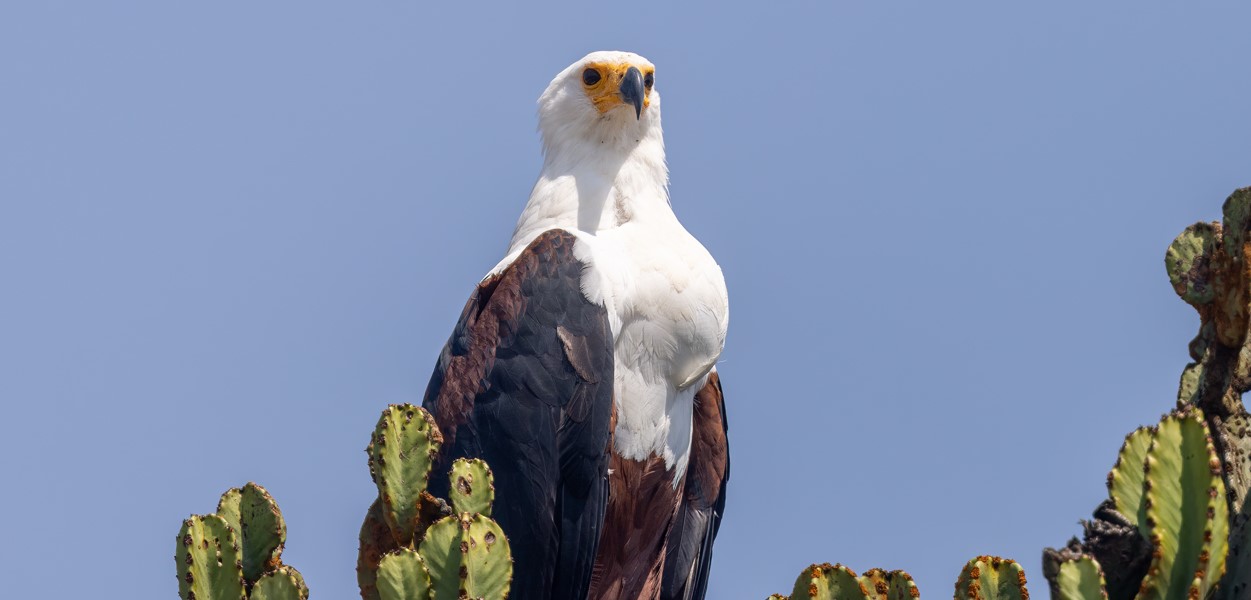
Day 3: Transfer from Masindi to Murchison Falls National Park via Budongo Forest
We will depart from our hotel after an early breakfast and travel to the neighbouring Budongo Forest Reserve in the west. Situated on the southern boundary of Murchison Falls National Park, this is a sizable area of pristine, undisturbed tropical forest. It is East Africa’s largest naturally occurring forest region. In addition to its population of chimpanzees and excellent birding, it is well-known for the enormous mahogany trees that thrive there.
We will stroll down the fabled “Royal Mile,” a top nature birding route beneath a thick forest canopy that is arguably one of Africa’s most well-known birding locations, comparable in stature to Peru’s renowned Manu road.
The forest route provides chances to see several amazing birds, such as the White-thighed Hornbill, Sabine’s and Cassin’s Spinetail, Blue Malkoha, Nahan’s Partridge, Ituri Batis, Tit Hylia, Forest Robin, Narina Trogon, Blue-throated Roller, Forest and Chestnut-capped Flycatcher, Speckled, Yellow-throated, and Yellow-rumped Tinkerbird, and Yellow-browed Camaroptera. Black-billed and Great Blue Turaco, Grey-throated, Yellow-billed, Yellow-spotted, and Hairy-breasted Barbet, Little Grey, White-throated, Plain, Spotted, Slender-billed, and Little Greenbul, Lemon-bellied Crombec, and Uganda Woodland Warbler
Among other species are the Black-capped Apalis, Red-tailed Bristlebill, Chocolate-backed, Blue-breasted, and African Dwarf Kingfisher, as well as the Dusky Long-tailed Cuckoo. We are able to witness the following primate species: chimpanzees, olive baboons, red-tailed and blue monkeys, and guerreza.
We will enjoy a packed picnic lunch in the lovely surroundings following our thrilling stroll up the “Royal Mile,” and then we’ll travel via Murchison Falls National Park to our overnight lodging. In addition to searching for birds, we may come across species such as the Red-cheeked Cordon-bleu, Baglafecht Weaver, Scarce Swift, Short-winged Cisticola, Bar-breasted and Black-bellied Firefinch, and Black-winged Red Bishop. Dinner and overnight at Pakuba Lodge
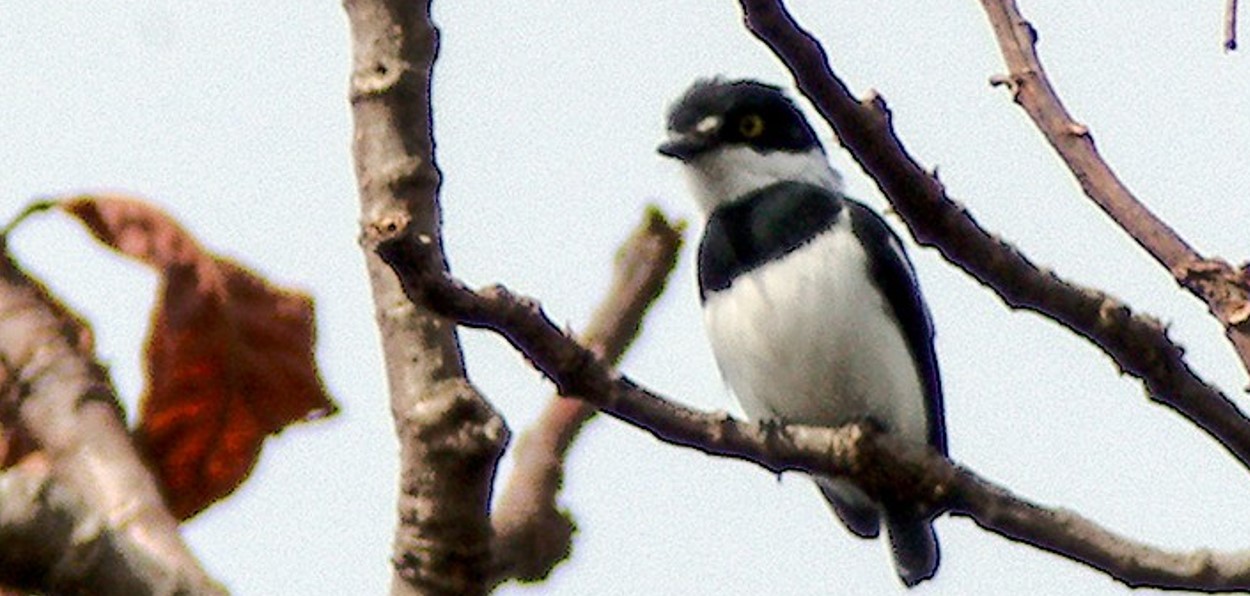
Day 4: Murchison Falls National Park to Masindi
After eating an early breakfast on the deck to start the day, we’re going to be moving! Our first activity of the day will undoubtedly rank among the highlights of the whole journey: a boat excursion to the park’s Nile River delta area! The boat voyage will take us across the more leisurely waters of the famed Nile River as it empties into the Albert Delta.
Along with other unique species, including Pel’s Fishing Owl, Long-toed Lapwing, Saddle-billed Stork, Red-throated Bee-Eater, Western Banded Snake Eagle, Goliath Heron, African Darter, Red-winged Grey Warbler, and Wire-tailed Swallow, this presents us with another chance to spot the iconic Shoebill. Along with African Elephants and Nile Crocodiles by the water’s side, we will also witness a large number of hippopotamuses in the water. Our boat voyage concludes the Victoria and Albert Niles’ confluence. At this point, the Victoria Nile empties into Lake Albert in the south.
Somewhere along the banks of the Nile, we’re going to have a packed picnic lunch.
We will search for the following during our drive: the Rothschild subspecies of giraffe, waterbuck, Sitatunga, hippopotamus, Uganda Kob, Tantalus and Patas Monkey, Olive Baboon, and the largest population of Nile Crocodiles in Uganda. We will also look for lions, Leopard, African buffalo, African elephants, and spotted hyaenas.
We will also reach a famous location on our drive: the summit of one of the most amazing waterfalls on the planet. Some have referred to the Murchison Falls as the most remarkable event to occur on the 6,700-kilometre Nile. The 50-meter-wide river pushes through a rocky opening that is less than 8 metres wide before plummeting 45 metres to the “devil’s cauldron” below, where it forms a spray mist that is characterised by a roaring thunder and a continuous hue. It is a sight and experience that will never be erased.
Following this tremendously thrilling day, we will take the 4 p.m. boat over the river and drive our car Budongo Eco-Lodge in kaniyo Pabidi. The greatest area in East Africa to search for Puvel’s Illadopsis is in the Kaniyo Pabidi region of the Budongo Forest, so if time permits, we will stop there briefly. Two other rare species that we might encounter are the Rufous-sided Broadbill and the Crested Guineafowl. After that, we’ll head to the lodge from where we spent the previous two nights. After a full day of birding, we will eat dinner and have some time to chat and unwind before going to bed.
Day 5: Kaniyo Pabidi to Kibale National Park
We check out, pack our luggage and head south after breakfast. Then it’s time for a breathtaking journey south to the Albertine Rift region, which is characterised by incredibly steep escarpments, vast rift valley flats, and stunning views of Lake Albert to the right. This place is incredibly gorgeous, and even though the travel takes five to six hours, the time flies fast.
While travelling through low-lying, wet areas in the Kagadi and Kagorro forest reserves close to Kyenjonjo, we will be birdwatching. During the drive, we could tick off a few more beautiful birds from our trip lists, such as the Village Indigobird, Long-crested Eagle, Vieillot’s Black Weaver, Black-crowned Waxbill, and Yellow-bellied Waxbill. We will stop and have lunch in Fort Portal since it will be lunchtime
We will go about an hour south to Kibale National Park after lunch. Renowned for its primates, the 776 km2 park is one of the last remaining areas with both lowland and montane forests. Formally formed in 1993, the park connects a contiguous forest to the southwest with Queen Elizabeth National Park. African elephants can roam freely in a 180-kilometre wildlife corridor created by bordering the parks.
The park’s diverse altitude gives rise to a variety of habitat types, which include the wet tropical forest (mossy evergreen forest) on the Fort Portal plateau, the dry tropical forest, and the woodland and savanna along the rift valley level. In Kibale, more than 350 different species of trees are registered.
But the main draw for naturalists visiting Kibale is its great concentration and diversity of primates, which draw visitors from all around Africa. Among the species are the vulnerable L’Hoest’s Monkey, the endangered Ashy Red Colobus, the endangered Guereza, the endangered Red-tailed Monkey, the endangered Olive Baboon, and the endangered Chimpanzee.
White-tailed Blue Flycatcher, Olive-bellied and Blue-throated Brown Sunbird, Luhder’s and Bocage’s Bushshrike, Honeyguide Greenbul, Brown-breasted Barbet, Blue Malkoha, Ross’s Turaco, African Dusky Flycatcher, Black-and-white Shrike-flycatcher, and Red-capped Robin-Chat are among the species we hope to see when we begin our birding in Kibale’s Sebitoli area.
We’ll arrive at our camp in the late afternoon and make ourselves comfortable. Tucked deep in the woodland is an atmospheric lodge. Here, you can smell and hear the jungle, see primates swinging between the trees, and watch rare birds and gorgeous butterflies flitting by. We frequently spot the African Wood Owl in the gardens, as well as Demidoff’s and Thomas’s Dwarf Galagos, on our travels.
We will meet up in the dining room to unwind, have supper, and spend the night together at Chimpanzee Forest Lodge
Day 6: Kibale National Park (including optional Chimpanzee trekking) to Fort Portal
325 different bird species, six of which are indigenous to the Albertine Rift Valley, can be found at Kibale. These include the Red-faced Woodland Warbler, Blue-headed and Purple-breasted Sunbird, Black-capped and Black-collared Apalis, and Dusky Crimsonwing. Afep Pigeon, Black Bee-eater, Olive Long-tailed and African Emerald Cuckoo, Crowned Eagle, Yellow-rumped Tinkerbird, Western Nicator, Abyssinian Thrush, Blue-breasted Kingfisher, Brown-chested Alethe, Grey Parrot, Brown Illadopsis, and numerous other highly valued species are among the other specialities found in Kibale.
After spending the entire morning birdwatching in this lovely woodland reserve, we’ll have a picnic lunch and relax before this afternoon’s thrilling activities.
At precisely 2:00 pm, we will meet at the Kanyanchu Tourism Centre in Kibale to go on our chimpanzee trekking adventure. The experience begins with a briefing from the outstanding park rangers who will serve as our activity guides. Following the briefing, we depart into the forest to find the closest living relative of humans. Over the years, there has been a huge success rate of seeing some of the 1,450 inhabitants of Kibale during the three-hour activity. Since the chimps are fully acclimated, you have the chance to get up close and take pictures of them. Experiencing them while they eat fruit, hang in trees, interact with one another, patrol, mate, and make hooting sounds is something you will never forget. You have an entire hour to appreciate these priceless animals.
Of course, Kibale’s abundant flora contains a number of other mammals, albeit they are rarely observed. Seeing Bushbuck, Blue Duiker, Common Warthog, Sitatunga, Forest Hog, or Bushpig is possible if we are lucky. And if we’re fortunate, we might come across two types of otter, African buffalo, leopards, certain African elephants that have adapted to live in forests, various mongooses, and even a lion. A keen eye can also spot numerous species of reptiles and amphibians. After this tiresome day, you will be transferred to your hotel in Fort portal for dinner and overnight
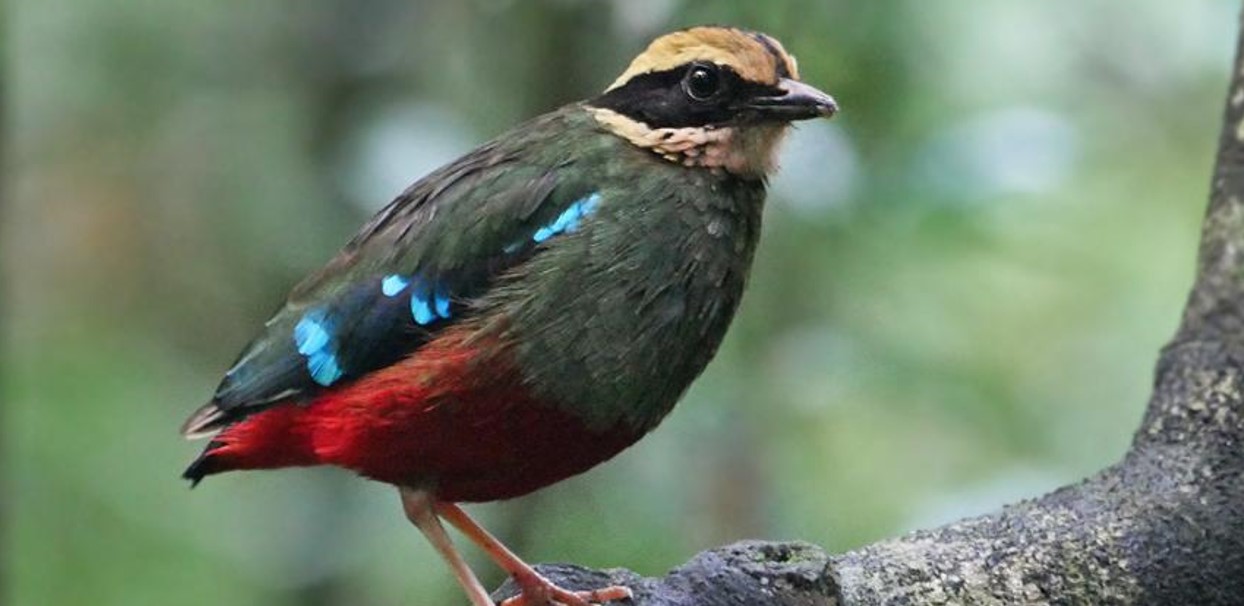
Day 7: Fort Portal to Semuliki National Park and back
This morning, we will have an early breakfast at the hotel, pick up our binoculars and cameras, and go west to a very special park. We plan to spend the entire day birdwatching at Semuliki National Park. The two-hour trip offers breathtaking scenery the entire way.
Encompassing Equatorial Guinea through the Congo, the Semuliki forest area is an extension of the West African rainforest, providing habitat for several unique species unique to the Guinea-Congo biome that are absent from other parts of East Africa. One of Uganda’s newest national parks, covering 219 km2 (85 sq mi), was created in 1993. It lies adjacent to the vast Ituri forest in the Democratic Republic of the Congo and is home to the sole lowland tropical rainforest in East Africa. Concerning bird and butterfly species in particular, it is one of Africa’s richest locations for floral and faunal richness. As you stroll along the network of trails today in search of birds, you’ll notice a shift in the atmosphere, as the park is also well-known for its ancient hot springs.
Fifty of the over 440 bird species that have been identified in the park are unique to East Africa. We will search for species that are unique to the Guinea-Congo biome, as well as others, such as the Congo Serpent Eagle, Yellow-throated Cuckoo, Bate’s Nightjar, Oberländer’s Ground Thrush, Orange-tufted Sunbird, Rufous-sided Broadbill, Black-throated Coucal, Icterine Greenbul, Nkulengu Rail, Spot-breasted Ibis, Long-tailed Hawk, Capuchin Babbler, Northern Bearded Scrub-robin, Red-chested Owlet, Western Bronze-naped Pigeon, Red-rumped Tinkerbird, White-bellied Kingfisher, Zenker’s and Lyre-tailed Honeyguide, Other bird species include African Piculet, Black Dwarf, and Red-billed Dwarf Hornbills, Chestnut-bellied and Pale-fronted Nigrita, Crested Malimbe, Swamp Palm Bulbul, Blue-billed Malimbe, and Piping Hornbill.
We hope to witness Angola Colobus, Vervet, Olive Baboon, Ugandan Grey-cheeked Mangabey, and Red-tailed Monkeys among the many unique animal species found in Semuliki, despite the dense foliage. On a one-day visit, one is unlikely to witness the more than 60 additional animal species that the park has to offer. Numerous species are among them, such as the Pygmy Scaly-tailed Flying Squirrel, African Elephant, African Buffalo, Leopard, Hippopotamus, African Civet, Water Chevrotain, Mona Monkey, Bay Duiker, Little Collared Fruit Bat, and Target Rat.
Following our incredible day in this unique forest, we will make our way back to our hotel in Fort Portal via car. After getting ready, we’ll get together to talk, update our travel schedules, and have yet another delicious supper.
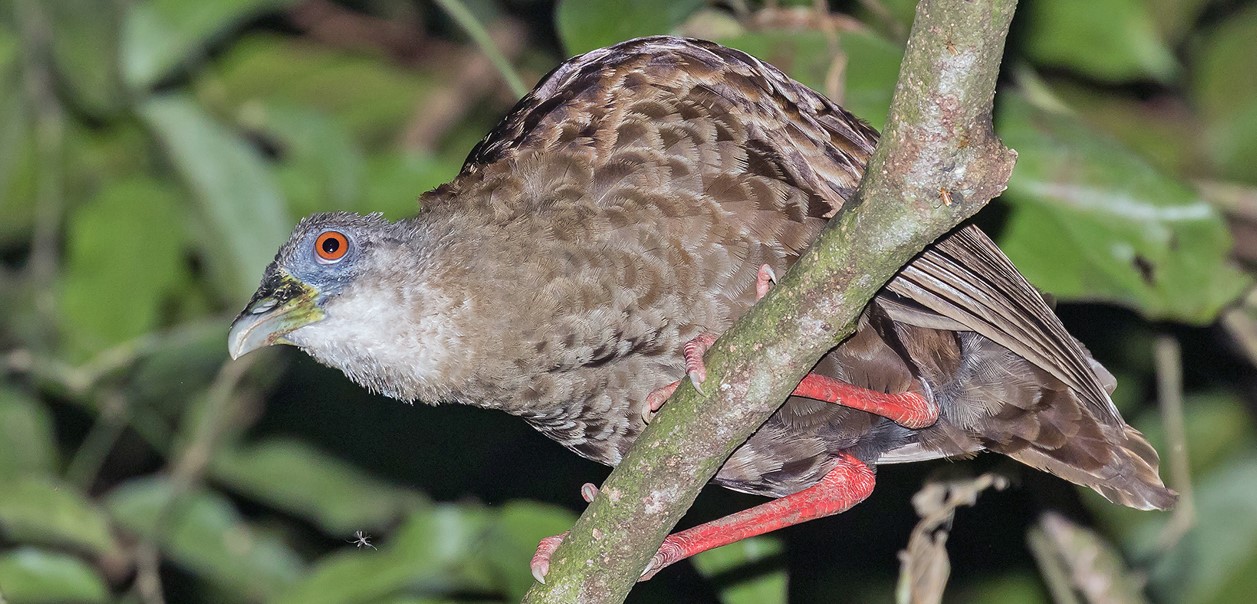
Day 8: Fort Portal to Queen Elizabeth National Park
After spending two amazing nights in Fort Portal, we will have a slightly later breakfast at our hotel today before packing up and saying goodbye. After that, we take off and travel south, our destination being Queen Elizabeth National Park. Depending on how many stops we make along the way to see more birds, the drive takes two to three hours. Along this section of the road, you may spot African Golden and Black-headed Weavers, Bronzy Sunbirds, and Little Sparrowhawks. We shall have lunch and get ready for a game drive.
Join us for a quick afternoon game drive to discover the striking scenery of “Queen,” as the park is known to locals and insiders. After being established in 1952 under the name Kazinga National Park, it was renamed two years later to honour Queen Elizabeth II’s visit. The Kazinga Channel connects Lake George in the northeast with Lake Edward in the southwest, making up the vast expanse of the park.
After the wildlife drive, we’ll engage in yet another fantastic activity: a sundowner boat tour over the breathtaking Kazinga Channel. Sitting on the strong cruiser and taking in the sights of the wildlife and birds while we drift calmly by is an amazing experience.
In terms of birds, we will search for the following: Temminck’s Courser, Yellow-throated Longclaw, Rufous-naped and White-tailed Lark, Stout, Red-faced and Croaking Cisticola, Kittlitz’s Plover, Rüppell’s Vulture, Bateleur, Brown Snake Eagle, Peregrine Falcon, Grey Kestrel, Pin-tailed Whydah, Senegal Lapwing, In addition to the African Skimmer, African Openbill, Wire-tailed Swallow, Yellow-billed Stork, Hamerkop, Pink-backed and Great White Pelican, African Wattled Lapwing, Water Thick-knee, White-winged and Gull-billed Tern, Lesser Black-backed Gull, Common Greenshank, African Sacred Ibis, and Wood, Marsh, Common Sandpiper, Black-lored Babbler, White-throated Bee-eater, Common Buttonquail, and Buff-belied Warbler.
On the drive, we could see the enormous Forest Hog, Leopard, Spotted Hyaena, Kob, Bushbuck, and Defassa subspecies of Waterbuck, tree-climbing lions. We will most likely see plenty of African buffalo, elephants, and hippos on the boat.
We’ll have a quick game drive down the channel track on our way back to the lodge following the amazing boat ride. After that, we’ll unwind and enjoy supper at the lodge while talking about future travel plans to far-off destinations. Dinner and Overnight at Buffalo Safari Lodge
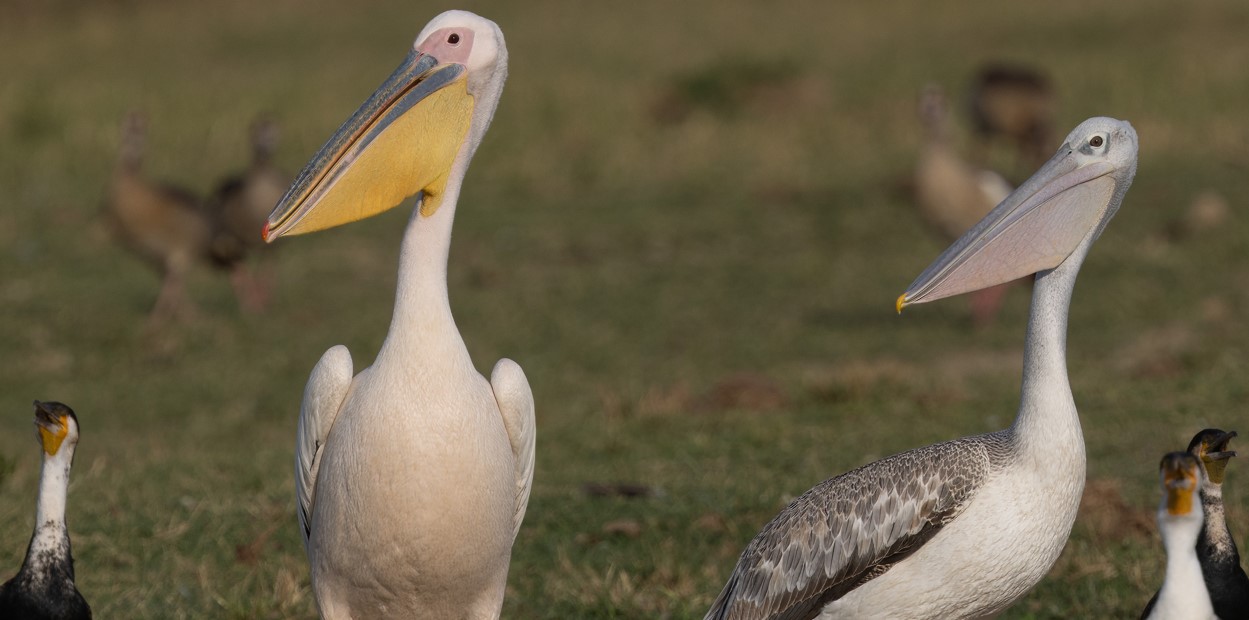
Day 9: Queen Elizabeth National Park to Bwindi & Special night birding
Before packing our things and checking out, we begin the day at the camp with an early breakfast. Moving still further south, we shall leave Queen Elizabeth National Park. To find the renowned tree-climbing Lions, whose males have black manes, who typically lie on fig tree branches and sweep the plains for food, we will go on a game drive in the Ishasha sector of the Rukungiri District before we leave the park. Sitatunga and Tsessebe, a subspecies of Topi, are only found in this part of the park.
The renowned Bwindi Impenetrable National Park is our next park, which we will visit after leaving Queen Elizabeth National Park. Along the way, we’ll stop for lunch, and by mid-afternoon, we’ll arrive at our destination.
Of course, Bwindi is most famous for being home to over half of the 400 mountain gorillas in the world that are believed to be left. It is, very rightfully, Uganda’s main tourist attraction. Apart from the magnificent and endangered mountain gorillas, the highly diverse park boasts around 350 bird species, comprising 23 of the 24 endemic species found in the Albertine Rift.
After settling into our lodging, which will serve as our home for the next two nights, we will begin our first forest birding excursion in Bwindi. The following are just a few of the unique species we hope to see: Buff-spotted, Tullberg’s and Elliot’s Woodpecker, Dusky Tit, Grey-throated Barbet, Northern Double-collared and Green-throated Sunbird, Petit’s Cuckooshrike, Grey-winged Robin-chat, White-eyed Slaty Flycatcher, Green Crombec, Red-tailed and Ansorge’s Greenbul, and many more.
We will head back to our resort following our afternoon birdwatching excursion.
We are going to have a fantastic evening tonight. Along the borders of the Bwindi Forest, we will be going night birdwatching.
Fraser’s Eagle-Owl, with its eye-catching orange eyes and deep, rich call, was one of the most unique species that we were able to view. Along with the Pennant-winged Nightjar, which has an odd appearance and can occasionally be heard and seen during the night, we will also be on the lookout for the Ruwenzori subspecies of Montane Nightjar, African Wood Owl, and Barred Long-tailed Cuckoo. These birds hunt insects and small animals.
During our evening journey, we may encounter the following mammals: African Civet, Serval, East African Potto, Southern Tree Hyrax, Demidoff’s Dwarf Galago, and Northern Lesser Galago. Dinner and overnight at Buffalo Safari Lodge
Day 10: Bwindi Impenetrable National Park (Buhoma)
The majority of today will be spent in Bwindi’s magnificent forests, where we will be searching for unique birds and creatures. Without question, one of the most well-known birdwatching locations in all of East Africa is Bwindi.
In the Buhoma sector, we will conduct birding surveys in the hopes of spotting species such as the African Goshawk, Cassin’s Hawk-eagle, African Black Duck, Yellow-throated Tinkerbird, Olive Long-tailed Cuckoo, Petit’s Cuckooshrike, Pink-footed Puffback, Willard’s Sooty Boubou, Black-billed Weaver, African Broadbill, Grey-chinned, Green-headed, and Green-throated Sunbird, Red-throated Alethe, Plain, Kakamega, Ansorge’s and Shelley’s Greenbul, Grey-colored Bushshrike, Waller’s Starling, Chapin’s Flycatcher, Red-headed Malimbe, Mountain Wagtail, Chapin’s Flycatcher, Grey-throated Tit-flycatcher, Neumann’s Warbler, and Many-colored Bushshrike.
Bwindi is home to more than 200 butterfly species, 27 types of frogs, more than 200 animal species (including many different primate species, in addition to African elephants and numerous antelopes), and spectacular bird species in addition to the Eastern Gorillas, which we will see tomorrow.
We will either go back to the resort for lunch and a nap before going birdwatching in the afternoon, or we will pack a lunch to eat someplace in the forest. We’ll decide which species we might still need to tick based on how everyone is feeling at the time. We’re going to meet together early tonight to catch up and eat dinner. The anticipation for tomorrow’s events is already be beginning to rise. One of the best ways to see animals in the world is to journey into the dense, deep forests of Bwindi in quest of the great apes. Dinner and overnight at Ride for a Woman Lodge
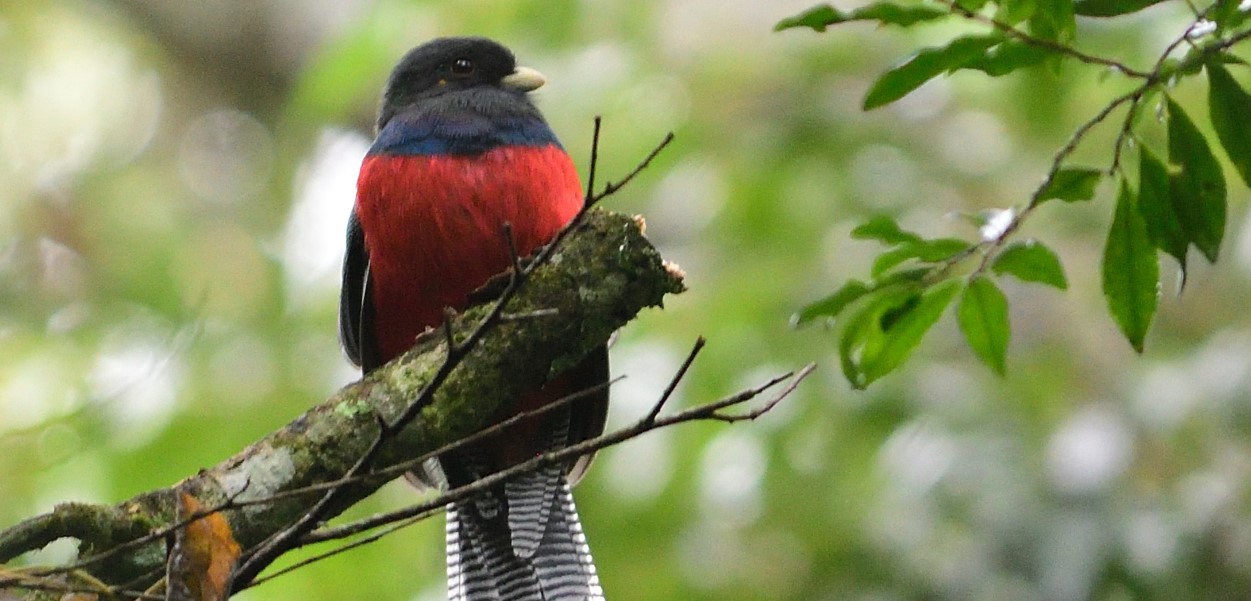
Day 11: Bwindi Impenetrable National Park (optional morning gorilla trekking)
After a hearty breakfast at our lodge, we will check out and pack our luggage. We’re going to the park offices so that knowledgeable local guides may brief us. We will set out at 8 a.m. to seek these magnificent mountain animals by following the marked paths inside the dense forest. Although the Mukiza family group is the target of our search, our knowledgeable guides are very good at pointing out the whereabouts of the various family groups, so we may adjust our itinerary based on where there is the most chance of seeing these incredible animals.
The Bwindi population, which comprises about half of all mountain gorillas worldwide, consists of approximately 400 individual gorillas that live in the park. Depending on their activity, gorilla trekking could take us several hours. Because of the sometimes-wet jungle and somewhat steep climbing, the walk for these huge apes is exhausting. However, we assure you that meeting, observing, and spending time with these amazing large apes—while staring into their warm, brown, expressive eyes—will more than make up for the little exercise. You will quickly understand why ape species, such as gorillas, are far more similar to humans than monkeys are, both genetically and evolutionary speaking.
Following this transformative gorilla trekking adventure, we will head back to the beginning location, where the phrase “we came, we trekked, we saw, and we conquered” will be chanted as we get our gorilla graduation diplomas.
After enjoying a picnic lunch, we will continue our birdwatching in this area of Bwindi. African Hill Babbler, Mountain Illadopsis, Equatorial Akalat, Magpie Mannikin, Black-faced Prinia, Black-faced Rufous Warbler, Thick-billed Seedeater, Black-billed Turaco, Ruwenzori Apalis, Cinnamon-chested Bee-eater, Cabanis’s Greenbul, Strange Weaver, Tullberg’s Woodpecker, Little Sparrowhawk, Crowned Hornbill, Elliot’s Woodpecker and many more species are sought after in this section. You will be transferred back to your lodge for dinner and overnight.
Day 12: Bwindi Impenetrable National Park
After breakfast, we will embark on a birding excursion in the Ruhija sector of the park. Though it’s not a big area, the birds in the Ruhija sector are usually so good that we’ll cover little ground by moving slowly. We will go by Kitahurira, also known as “The Neck,” which is another popular Ugandan birdwatching location visited by serious birders from around the globe. We’ll go on to some more open, farmed regions later on, where there are thick patches of bracken that are home to several species. The amazing birding we will be experiencing today will make this already breathtaking location even more unforgettable.
Ayre’s Hawk-eagle, Crowned Eagle, Common and Augur Buzzard, Black Sparrowhawk, Ross’s Turaco, Bar-tailed Trogon, Western Bronze-naped Pigeon, White-headed Wood Hoopoe, Grey-throated Barbet, Red-tailed and Shelley’s Greenbul, Doherty’s Bushshrike, Red-throated Alethe, African Shrike-flycatcher, Black and Cinnamon-chested Bee-eater, Bronzy, Tiny, Copper and Variable Sunbird, Baglafecht, Brown-capped, Black-necked, and African Golden Weaver, and so on. The Cassin’s Honeybird, African Stonechat, Black-throated and Yellow-crowned Canary, Rwenzori Batis, Western Citril, Chubb’s Cisticola, Mackinnon’s Shrike, Yellow-bellied, Kandt’s and Black-crowned Waxbill, White-chinned Prinia, Yellow Bishop, Village Indigobird, Red-headed Bluebill, Dusky Twinspot, and Yellow-bellied Waxbill are also popular residents of Ruhija
This afternoon, if time permits, there may be time to bird the Mubwindi Swamp, another well-known and rewarding birding site. Here, the rare, endangered, and locally endemic Grauer’s Broadbill is our primary objective; if fortune favours us, we may also catch African Rail and Red-chested Flufftail. In addition to many other bird species, we were able to tick Carruthers Cisticola, Grauer’s Swamp Warbler, Olive, Elliot’s, Fine-banded Woodpecker, Black-billed Turaco, African Hill Babbler, Yellow-eyed Black Flycatcher, Rwenzori Batis, Mountain Greenbul, Red-faced Woodland Warbler, Grey Cuckooshrike, Chestnut-throated, Collared, and Black-throated Apalis, Mountain Yellow Warbler, Stripe-breasted Tit, Mountain, Shelley’s, and Yellow-streaked Greenbul, Regal Sunbird, and Mountain Illadopsis. Dinner and overnight at Gorilla Mist Camp
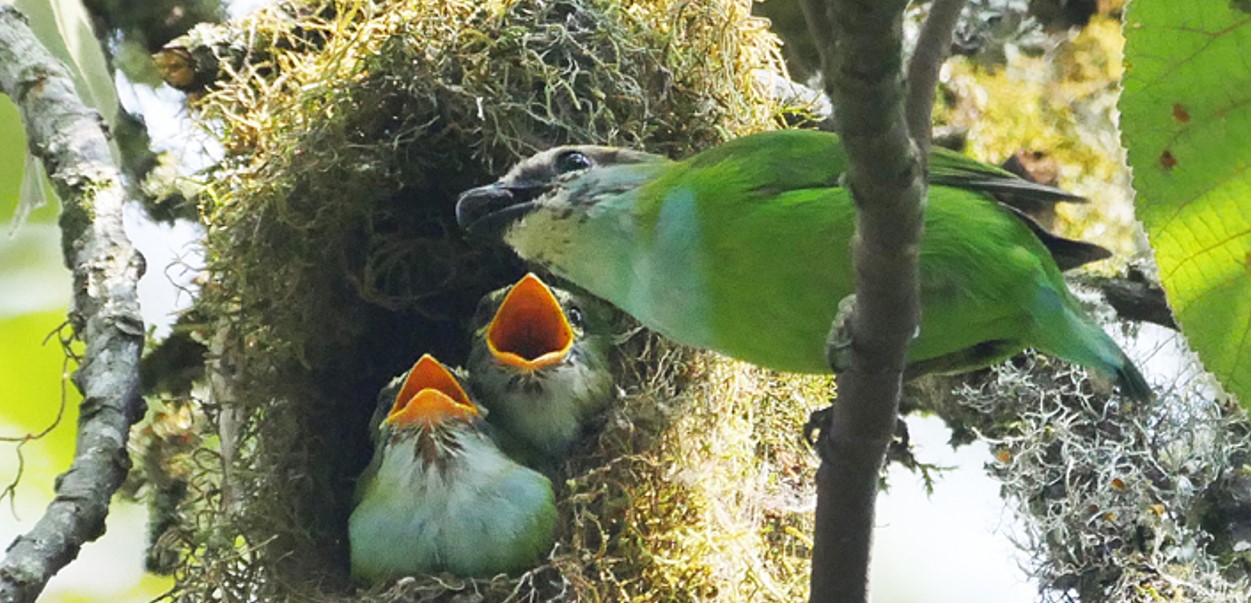
Day 13: Bwindi to Lake Mburo National Park
After breakfast, we will travel northeast to reach Lake Mburo National Park, the last park on this amazing birdwatching tour. Although it will take five to six hours to go to the northeast, we will still search for birds and stop for breaks as needed. This section of road has been home to Long-tailed Cisticola, African Stonechat, Fan-tailed Widowbirds, Long-crested Eagles, and Augur Buzzards on past visits.
Via the Sanga Gate, we will enter Lake Mburo National Park. We will see some of the well-known long-horned Ankole cattle of the Bahima tribe just outside the park.
After arriving at our wonderful lodge and checking in, we’ll enjoy a delicious late lunch. We’ll take an early evening game drive in the park to cap off our day. Aside from the 350 bird species found in Lake Mburo, other animals found there include Plains Zebra, Impala (found in only one park in Uganda), Common Eland, African Buffalo, Oribi, Defassa subspecies of Waterbuck, Leopard, Lion (possibly the last one remaining in the park), Hippopotamus, Spotted Hyaena, Topi subspecies of Tsessebe, and Southern Reedbuck.
The localised Red-faced Barbet, Rufous-bellied Heron, African Marsh Harrier, White-backed, Lappet-faced, and White-headed Vultures, Brown Snake Eagle, African Hawk-eagle, Bateleur, Coqui Francolin, Grey Crowned Crane, Black-bellied Bustard, Red-headed Lovebird, Ross’s Turaco, Bare-faced Go-away-bird, and others are some of the avian treasures of the park that we will search for. Woodland Kingfisher, Tropical Boubou, Nubian Woodpecker, White-headed Barbet, Green Wood Hoopoe, Common Scimitarbill Long-tailed Cisticola, Yellow-breasted Apalis, Green-capped Eremomela, Red-shouldered Cuckooshrike, and White-winged Tit also feature in the park. You will be transferred back to Rwakobo Rock Lodge for dinner and overnight.
Day 14: Lake Mburo to Entebbe
Our final “safari activity” of the tour will be a quick private boat ride on the lake following our early-morning breakfast. One of the most exquisite and serene boat trips you could ever imagine is this one. Along with the breathtaking landscape, we hope to see several unique species before ending our journey, such as the African Finfoot, African Fish Eagle, Squacco Heron, Water Thick-knee, Pied and Giant Kingfisher, and a large number of hippos.
We will start the 4- to 5-hour transfer to Entebbe after the boat cruise. But there’s still one surprise in store. We’ll pause at Kayabwe, the Ugandan Equator crossing. You will be transferred to Entebbe at Papyrus Guest House for relaxing, dinner and an overnight stay. Along the way, keep an eye out for various avian species, as this is usually rewarding.
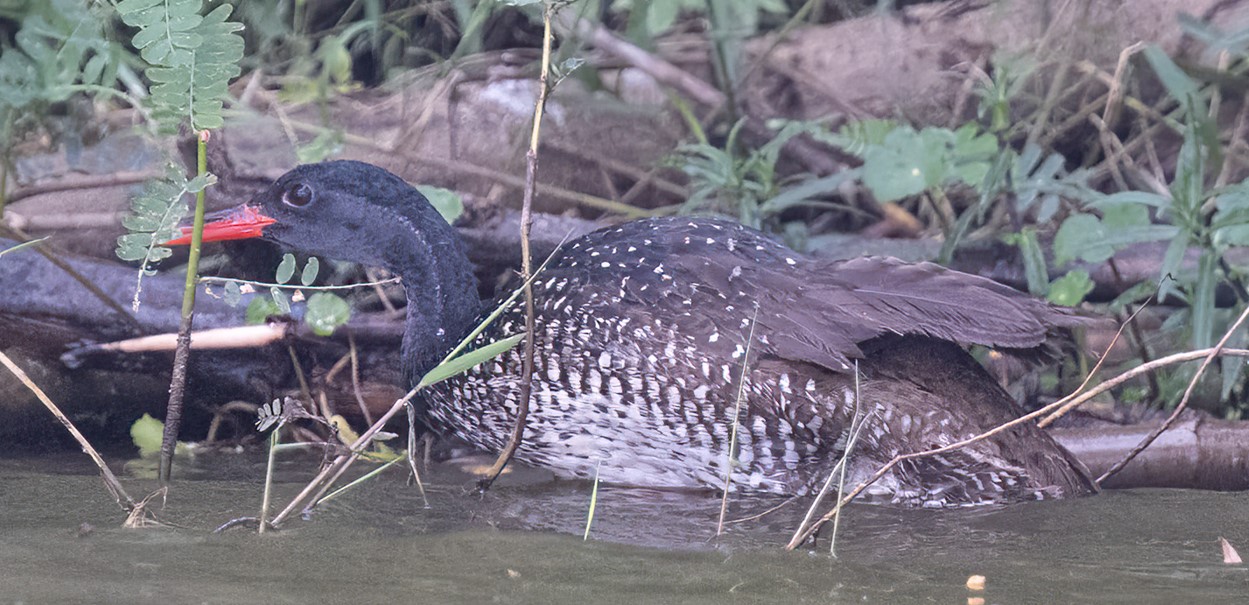
Day 15: Departure
After breakfast, you will be transferred to Entebbe International Airport for Departure.
